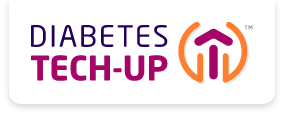Common adherence challenges in diabetes and how I address them with digital health
By Alicia Shelly, MD, FACP
6 min read

As physicians treating people with diabetes, we‘ve all heard a myriad of reasons for why patients haven’t been taking their medication, logging their blood sugar or insulin doses, or eating or exercising like we recommend. At this point, I’ve heard about everything other than “the dog ate my logbook.”
Still, I try not to look at these as just excuses. In my experience, when someone in my care struggles with staying on track, there’s often more to the story than the missed dose or skipped workout—there may be something deeper getting in their way. If I can identify their challenges, understand their values, and help them find internal motivation to manage their diabetes, then it’s easier for us to come up with a plan they can realistically commit to.
More and more, many of the solutions I find myself recommending to address adherence issues involve diabetes tech. I’ve been able to uncover some adherence challenges using tech that I was previously unable to crack with just encouragement or stern counseling.
While not an exhaustive list, here are a few adherence barriers that I run into most often in my practice, along with some digital health tools and communication strategies that I use to keep people engaged with their diabetes management plan.
1. The many responsibilities of diabetes self-management1,2

Between the ongoing steps of monitoring blood glucose levels, taking medication, and tracking diet and exercise, burnout for people with diabetes is real and understandable.
When I recognize that these tasks may cumulatively be contributing to nonadherence, I do a few things. First, I try to acknowledge the ways that the person is self-managing their diabetes and praise them for the work they have done. It could be something as simple as, “You’ve done a great job researching new options for your meal plan.” I also ask questions about how things are going and give them an opportunity to share what has been going well and what has not been going so well for them. That way, I’m able to share diabetes tech that matches their expressed needs.
Then I walk them through what the tech is and how it could help them, such as automating some of the tasks they are finding cumbersome.
2. Downplaying the consequences of unmanaged diabetes3,4
I’ve seen many people with diabetes downplay the consequences of not sticking with their diabetes management plan. It can be easy to justify not checking their blood glucose regularly or missing an insulin dose here or there when they don’t fully understand the potential impact of half-hearted diabetes management.
I’ve found that showing my patients real-time or aggregate glucose data from a continuous glucose monitor (CGM) can help spur some revelatory moments. It helps to take diabetes management out of the theoretical and into the practical. Instead of weighing each choice through the lens of how it could affect their A1C readout every three months, they can see how staying on top of their medications, diet, and exercise may affect their levels minute by minute.

I’ve found that showing my patients real-time or aggregate glucose data from a continuous glucose monitor (CGM) can help spur some revelatory moments.
Even if they’ve heard it from me 100 times before, actually seeing their glucose levels spike or dip in relation to something they’re doing or not doing can be the trick to helping them see how their actions may affect their diabetes.
3. Constant time pressures5
On top of the time required for daily self-management, it’s important to remember that people with diabetes have personal, family, and work obligations just like everyone else. Keeping appointments, staying in touch with their care team, and picking up prescription refills on time adds to their already long to-do list.
Since telehealth has become more mainstream, I always ask my patients how they prefer to meet and communicate. I’ve found that a virtual visit can help save them time since they won’t have to travel to my office, and less time away from work may mean that they don’t have to make that time up later.
I find that if I show a commitment to saving my patients time through things like virtual visits or text message reminders vs phone calls, they may be more open to other technologies that can also give me greater insight into their diabetes. And if we can find a way to make those technologies fit with their busy schedules, that’s a win for both of us.
Tech-up Follow-ups
- Identify the patients you’ll be seeing in the next 2 weeks who would benefit from a technology tracking tool.
- Prepare some questions for each patient to help figure out what’s going well—and what’s not going well—with their diabetes management routine.
- Plan to have a few diabetes tech options on hand to show these patients; ask them how they’d feel about using them as part of their self-management routine, and how they might help.

Alicia Shelly, MD, FACP
Douglasville, Georgia
Dr Shelly is a primary care provider who regularly sees patients with diabetes. She is a board-certified internal medicine physician at Wellstar Primary Care in Douglasville, Georgia.
Alicia Shelly received a fee from Novo Nordisk for her participation.
References
- Swanson V, Maltinsky W. Motivational and behaviour change approaches for improving diabetes management. Practical Diabetes. 2019; 36(4):121-125.
- Peyrot M, Burns KK, Davies M, et al. Diabetes Attitudes Wishes and Needs 2 (DAWN2): a multinational, multi-stakeholder study of psychosocial issues in diabetes and person-centred diabetes care. Diabetes Res Clin Pract. 2013;99(2):174-184. doi:10.1016/j.diabres.2012.11.016
- Berger BA, Villaume WA. Motivational interviewing for healthcare professionals: a sensible approach. Washington, DC: American Pharmacists Association; 2013.
- Sy SL, Munshi MM, Toschi E. Can smart pens help improve diabetes management? Diabetes Metab J. 2021;45(6):813-839. doi:10.4093/dmj.2021.0177
- Ashrafzadeh S, Hamdy O. Patient-Driven Diabetes Care of the Future in the Technology Era. Cell Metab. 2019;29(3):564-575. doi:10.1016/j.cmet.2018.09.005
The Diabetes Tech-upTM Podcast
Join our expert cohosts for a series of discussions about how they’re integrating diabetes tech with patient-centered care to help optimize diabetes management.
The Mission of Diabetes Tech-upTM
Diabetes Tech-upTM is sponsored by Novo Nordisk, a global leader in diabetes. We believe that adoption of innovative technologies can help appropriate patients better manage diabetes. Our goal is to provide information to help health care professionals on the front line of diabetes care strengthen their understanding of diabetes technologies and implement them where they can have the greatest impact.




Share: